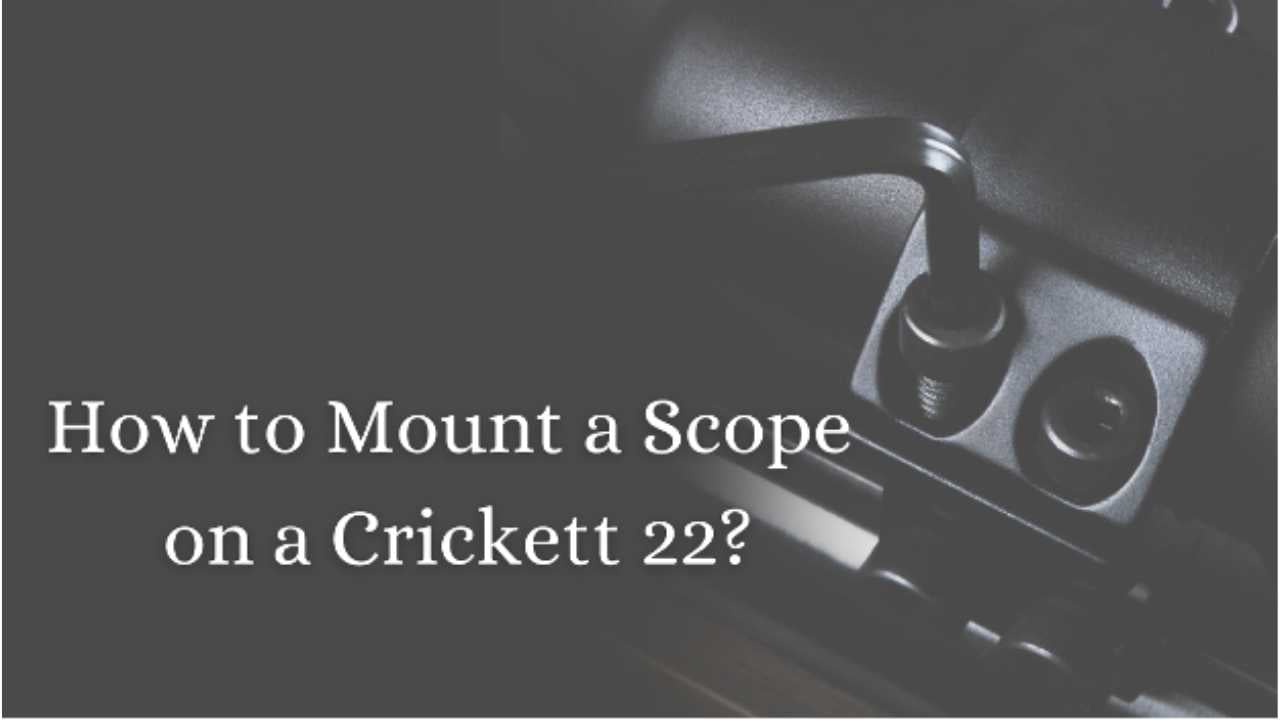
Did you recently purchase a new scope for Crickett 22 rifle but can’t figure how to Mount a Scope on a Cricket 22? As it is one of the greatest firearms out there for young shooters, a well-mounted scope is essential for making things more effortless. However, the crucial step is to mount the Crickett 22 with the most precise rifle scope. It is so a shooter can perform well and get the outcomes they require.
Choosing a particular scope type and mounting it on your Crickett Rifle is a rather complicated task. It is because the slightest carelessness during mounting could bring about significant aiming errors. To acquire the most out of your rifle, you have to mount a rifle scope in the most accurate way possible. Before we can jump into the scope-mounting rules, let’s look at what a rifle scope is.
What is a Riflescope?
Since before the Civil War, telescopic sights have been around. After then, advances in riflescopes led to hunters receiving reliable equipment. These were then quickly adopted as a standard on modern hunting rifles. But, what is a riflescope? A riflescope is essentially a miniature telescope that aids in more accurate shooting. It is an aiming aid that improves your vision while aiming. A scoped rifle includes:
The Objective and Ocular lenses
The shooter looks through the smaller ocular lens. It gives a sharp sight by focusing on the light from the objective lens. Both lenses are excellent since they are well-coated to repel water and allow light to pass through.
Windage and the Elevation turret
The windage and elevation turrets are the two components responsible for the management of reticle adjustment. The windage turret on the scope’s right side assists in regulating the reticle’s horizontal movement, while the elevation turret controls the reticle’s vertical movement.
Power selector
In adjustable scopes, the power selector helps to modify magnification. You can do this by adjusting the zoom settings on it.
Reticle
The reticle is a bullseye crosshair, mostly Mildot and Duplex, which aids in precise aiming.
The eyepiece, scope tube, erector lenses, and parallax error knob are among the other components.
The scope you choose will determine whether you succeed or fail. A rookie hunter does not realize that the quality of a rifle scope can be more significant than the firearm itself. With a good riflescope and a mediocre gun, a hunter can hit a target. Even with the best weapons on the market, a hunter with a weak scope will have challenges while striking targets. As mentioned previously, it is crucial to find the works best for you. If not, your shooting skills may face a downfall before you even start working on them.
Types of Rifle Scopes
There are tons of rifle scopes available for you to use; however, it can be a somewhat tough decision to get good results out of just one. It is why you have to weigh your options and look over all the types of rifle scopes there are to get. These are some of the few varieties of rifle scopes.
Aperture sight
This scope is optic-free and consists of two sights, known as the front and rear perception. For avoiding misreads, they usually have a metal design.
Red dot
These are free from parallax error, and you can get a red dot size of your choice.
Reflector sight
This optical device uses reflective glass to give the best possible projection. There is no need for alignment as it adjusts according to your eye position.
Open sight
It is comparable to aperture sights in that they are optic-free and have a typical scope with back and front sights. Moreover, they consist of very identical materials.
Laser sights
This device projects a barrel-aligned laser at the aiming point. However, its visibility decreases under the sun.
Mounting a Scope on a Crickett 22
1. Clean the mounting surface
The first stage in mounting the scope is to prepare your rifle for the scope base installation. Remove any grease, residue, or debris that might cause your scope base to not sit properly on the Crickett 22. Remove the plug screws from the receiver’s head to have clearance to each screw hole and thoroughly clean it. To avoid damaging your receiver, make sure you detach the screws with an appropriately sized screwdriver.
2. Mount the base
Apply a tiny amount of gun oil to the contact surfaces of the scope base before mounting it to your rifle. This lubricant may help prevent rust from accumulating between the scope base and the receiver, based on the type of material.
Because the recoil from firing your rifle might cause some of the screws to slide loose over time, a thread-locker is advisable for the screw threads. It will keep everything in place and guarantee that the screws have a correct insertion upon tightening.
3. Install the scope rings for scope testing
To avoid losing anything, dismantle and store all of the tiny screws and additional scope ring components.
You should install the bottom rings first, then test the scope fitting before attaching the upper ring parts.
Place the scope into the lower pair of scope rings after the rifle is secure. Ensure that these ring components are spaced far enough apart from the adjustment turrets and objective bell for any future modifications that may be necessary.
4. Set the eye relief
Level your eye with the rifle to determine the proper eye relief. To find the best alignment, adjust the scope by gently sliding it back and forth. When positioned at a precise distance, you should have a clear field of view.
5. Level the scope
Position your scope so that the reticle is perpendicular and aligned to the rifle’s bore. Maintaining a level reticle will assist in effectively compensating for wind resistance and height.
After mounting the scope on your Crickett 22, gently tighten each of the scope ring screws in a cross pattern.
Final Words
To sum it up, riflescopes have become a necessity for all skilled shooters everywhere. With the variety in what to choose and its usefulness, rifle scopes are undoubtedly a tool that cannot be forgone!
